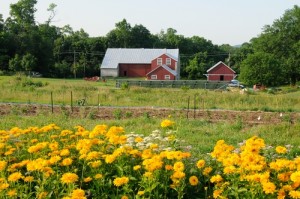This semester I am taking South American Archaeology as one of my four classes. Right now, we are discussing pre-Incan Andean civilizations, some of which inhabited the area of Peru that we will be visiting on our upcoming trip. While developments in pre-Incan cultures might not be directly related to climate change, the topic of climate comes up often in the study of pre-Incan cultures, as it plays an important role in societies that are so connected to the Earth and the environment. There was, of course, no anthropogenic climate change during the pre-Incan period, but climate affects civilizations nonetheless. In fact, the collapse of the Tiwanaku was caused in part by a changing climate.
The Tiwanaku, a civilization present during the Middle Horizon period of Peruvian history, from about AD 500-1000, was already seeing fragmentation in their society near the late 11th century, as evidenced by the defacing of ritualistic monoliths– representing a ritual “killing” of the monolith’s ritual and power. But, beginning in the late 11th century and continuing for a few hundred years, a drought hit the altiplano region of the Andes, the location of the Tiwanaku capital. At the time, the Tiwanaku had a centralized food economy, and the drought put stress on this, exacerbating fragmentations in an already disjointed culture. Local production systems came under the control of local corporate groups exercising local autonomy over their region, taking power away from the elites of the society (Janusek). Tiwanaku civilization was really an alliance of many different ethnic groups, which probably made it easier for it to break apart.
Obviously, a development such as the one seen with the Tiwanaku can inform our current situation with global warming. For instance, the US, similar to the Tiwanaku, has a centralized food economy that could be damaged by the effects of current climate change. Because all areas of the country depend on a centralized production center, the whole country will feel the effects of climate change, as a decrease in crop yield in one part of the country will affect the quantity and quality of food shipped to the whole of the country. We are not only facing at long-term drought, as the Tiwanaku did, but also rising oceans, more extreme weather, and hotter global temperatures. While we might have a better infrastructure than the Tiwanaku did, if we don’t do anything, at some point we will not be able to deal with the fallout from current climate change. Further, even if the US can deal some of these effects, the same cannot be said for less developed countries. These changes will not only have damaging effects on human populations, but might even modify economic and government systems. Already, and as Michael Pollan hints at in his book, The Omnivore’s Dilemma, we are seeing, in some areas of the US, movement towards supporting locally sourced food (Pollan). Could this represent regions of the US starting to exhibit more local autonomy, due to the stresses put on the world’s economic and political systems by climate change? Furthermore, private corporations and subnational governments are working together to form transnational governance networks, for the purpose of working to mitigate and adapt to climate change below the realm of international negotiations, as they realized some of the failures of the UNFCCC and Kyoto Protocol. I’m not saying our whole civilization is going to collapse due to climate change, but climate change will definitely affect more than just our daily everyday life. It will affect the whole of human civilization.
Works Cited:
Janusek, J.W. 2004 Household and City in Tiwanaku. In Andean Archaeology, edited by H. Silverman, pp. 183-208. Blackwell Publishing, Oxford.
Pollan, Michael. The Omnivore’s Dilemma: A Natural History of Four Meals. New York: Penguin, 2006. Print.

